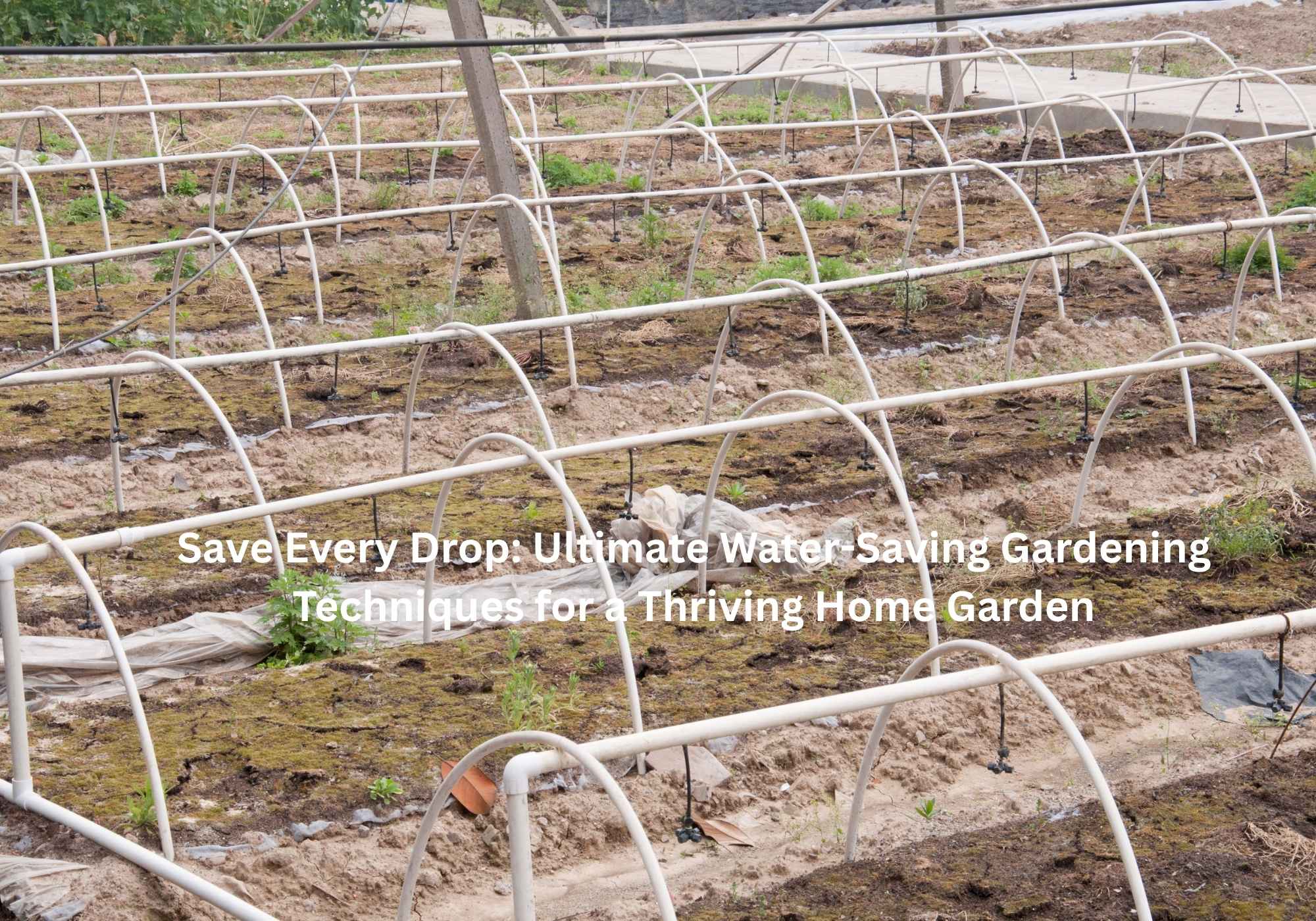Introduction – Water-Saving Gardening Techniques
Water scarcity is a growing concern worldwide, making it essential for home gardeners to adopt water-saving gardening techniques. Not only do these methods help conserve a precious resource, but they also promote healthier plants and reduce your water bills. Whether you have a small balcony garden or a sprawling backyard, implementing smart watering strategies can transform your garden into a sustainable oasis. Here’s a comprehensive guide to water-saving gardening techniques tailored for the home and garden enthusiast.
Understanding Your Garden’s Water Needs
The first step in conserving water is understanding that not all plants require the same amount of hydration. Grouping plants by their water needs—a practice called hydrozoning—ensures each plant receives the right amount without waste. For example, drought-tolerant plants like succulents and lavender can be placed together in a low-water zone, while thirstier plants occupy areas closer to your water source.
Adjust your watering schedule seasonally: plants need more water during hot summer months and less during cooler periods. Overwatering can be as harmful as underwatering, leading to root rot and weak plants.
Smart Irrigation Systems
Traditional sprinklers often waste water through evaporation and runoff. Instead, consider:
-
Drip Irrigation: Delivers water directly to plant roots, minimizing evaporation and runoff. It can be customized for different plants and soil types, promoting healthier growth.
-
Soaker Hoses: Release water slowly along their length, soaking soil evenly and efficiently.
-
Smart Controllers and Timers: Automate watering schedules to avoid overwatering and ensure watering occurs during cooler parts of the day, such as early morning or late evening, reducing evaporation.
Using watering cans instead of hoses for small gardens can also reduce water usage significantly.
Mulching and Soil Health
Mulch is a gardener’s best friend for water conservation. Applying organic mulches like wood chips, straw, or grass clippings around plants reduces soil evaporation by up to 70%, keeps soil cool, and suppresses weeds that compete for water.
Regularly enriching your soil with compost improves its water retention capacity, allowing it to hold moisture longer and reducing the frequency of watering.
Choosing Drought-Tolerant and Native Plants
Selecting plants adapted to your local climate reduces water needs drastically. Xeriscaping—a landscaping method using drought-resistant plants—creates beautiful, low-maintenance gardens that thrive with minimal irrigation.
Native plants are especially water-wise because they are naturally acclimated to your region’s rainfall patterns and soil conditions, requiring less supplemental watering.
Rainwater Harvesting and Greywater Use
Collecting rainwater in barrels or butts is an excellent way to supplement your garden’s water supply. Rainwater is often softer and better for plants than tap water. Cover your storage containers to prevent mosquito breeding and debris accumulation.
Greywater—recycled water from showers, sinks, and laundry—can also be used to irrigate non-edible plants during dry spells, provided it is cool and free from harmful chemicals.
Watering Techniques and Timing
Water plants early in the morning when temperatures are cooler to maximize absorption and minimize evaporation. Avoid watering in the heat of the day or late at night to prevent fungal diseases.
Practice deep and infrequent watering to encourage roots to grow deeper into the soil, making plants more drought-resilient. Shallow watering leads to surface roots that dry out quickly and increase water demand.
Additional Tips for Water Conservation
-
Fix leaks in hoses, faucets, and irrigation systems promptly to prevent water loss.
-
Avoid watering non-plant areas like paths and patios.
-
Let lawns grow slightly longer during dry spells to shade the soil and reduce evaporation.
-
Use water-retaining crystals in pots and containers to hold moisture longer.
-
Group plants with similar watering needs together to simplify irrigation and reduce waste.
By integrating these water-saving gardening techniques, you can cultivate a lush, vibrant garden that conserves water, saves money, and supports environmental sustainability. Start with small changes like mulching and smart watering schedules, then expand to rainwater harvesting and drought-tolerant landscaping for maximum impact. Your garden—and the planet—will thank you.

